The new mathematics pathways
The different math options prepare students to enter certain trades, professions or technical occupations, and to become better integrated into society and to enrol in a pre-university program. The options also address the development of mathematical literacy, the role of active citizens and the requirements of different employment sectors.
Although the options promote exploration, experimentation and simulation, each is characterized by its own unique path and objectives.
This option is aimed at students who like to design objects and activities, develop projects or participate in their creation or completion.
It is likely to stimulate students’ interest in social causes and develop their entrepreneurial spirit. It makes more use of statistics and discrete mathematics and emphasizes situations that students will face in their personal and professional lives.
The studies in this option allow student to enrich and build on their knowledge of basic mathematics, and more specifically prepare them for studies in the arts, communications or the human and social sciences.
For the young person who likes to:
- design objects and activities.
- develop projects or participate in their completion.
- understand how objects work.
- analyze everyday situations related to health, the environment and the media.
And that:
- has an interest in social causes.
- has an entrepreneurial spirit.
- calls upon his intuition.
- has an analytical capacity.
Possible pre-university college programs:
- Social Science (except the administration profile)
- Arts, Literature and Communication
- Visual Arts
- Dance or Music
Note: other courses are accessible to students who have completed remedial math courses.
Possible technical programs
Certain programs only. Refer to the list of technical training programs found on the Vocational and Technical Training FPT Inforoute. Note: other courses will be accessible to students who have completed remedial courses.
Possible vocational training programs
All courses. (Refer to the list of technical training programs found on the Vocational and Technical Training FPT Inforoute)
The Technical and Scientific option targets students wishing to explore situations that occasionally combine manual and intellectual work. Emphasis is placed on carrying out case studies as well as the ability to spot errors and anomalies in processes or solutions, with a view to defining the problem and making appropriate corrections. It requires identification of mathematical concepts and processes associated with the design, operation or use of certain technical instruments.
This option promotes the exploration of different areas of study but aims specifically to enable students to work effectively in technical fields related to nutrition, biology, physics, business administration, the fine arts and graphic arts.
For the young person who likes:
- to understand by doing concrete activities.
- to invent and manufacture technical objects.
- to understand the fabrication and operation of devices.
- to follow technological developments.
- the economy.
And that:
- has a practical mind.
- wishes to invent, disassemble and repair objects.
- manifests curiosity for technical objects.
Possible pre-university college programs:
All programs, if the student has both Secondary 4 and 5 TS mathematics. Refer to websites of colleges that interest your child to know which programs are available. Note: if the student only has his Secondary 4 TS math, other programs will be available once he has completed remedial Secondary 5 TS math (often offered in college).
Possible technical training programs
All programs, insofar as the student has both Secondary 4 and 5 TS mathematics. Refer to the list of technical training programs found on the Vocational and Technical Training FPT Inforoute. Note: if the student only has their Secondary 4 TS math, other programs will be available once he has completed remedial Secondary 5 TS math (often offered in college).
Possible vocational training programs
All programs. Refer to the list of vocational training programs found on the Vocational and Technical Training FPT Inforoute.
The Science option is intended for students who seek to understand and explain the origin and functioning of certain phenomena, and to make decisions pertaining to them. Students are led to develop formal proofs or demonstrations where there is always a need to confirm a truth.
By focusing on the properties of mathematical objects, this option emphasizes the student’s capacity for abstraction, particularly as they are required to conduct complex algebraic operations. Emphasis is on finding, developing and analyzing of models resulting from experiments mainly related to different scientific fields.
For the student who likes:
- to search, seek and discover.
- reflect, observe and analyze.
- understand the “why” of things and ask questions.
- current scientific topics.
- explain phenomena.
And who is:
- an observer.
- methodical.
- a searcher.
- endowed with a critical mind.
- autonomous.
Possible pre-university college programs:
All programs, if the student has both Secondary 4 and 5 SN math. Refer to the websites of the cégeps that interest your child to find out about the different programs offered. Note: if the student only has their Secondary 4 SN mathematics, other courses will be available when he has completed remedial Secondary 5 SN math (often offered in college).
Possible technical programs
All, if the student has both Secondary 4 and 5 SN mathematics. Refer to the list of technical training programs found on the Vocational and Technical Training FPT Inforoute. Note: if the student only has their Secondary 4 SN mathematics, other programs will be available when they have completed Secondary 5 SN remedial mathematics (often offered in college).
Possible vocational training programs
All programs. Refer to the list of vocational training programs found on the Vocational and Technical Training FPT Inforoute.
Starting Cycle 2 of high school means taking a big step toward autonomy. Your child will be faced with different course options, and the choices they make will have a lasting impact on their academic path.

Some teens already have a good idea of their future career choice and the prerequisites they need. However, the vast majority of them have only just begun to think about life after high school. For these students, making decisions can cause a lot of anxiety. Here’s what you need to know to help your child choose the right math option for them.
Secondary IV math options
In Secondary III, students are asked to pick their Secondary IV math course. This is a very important decision, as it generally determines their school curriculum for the next two years. For example, if your child chooses the Science Option (SN), they will probably follow this track in Secondary IV and V.
1 – Cultural, Social, and Technical Option (CST)
This option, or profile, prepares students for further studies in social sciences, communications, or the arts. To help your child determine if this profile is right for them, ask them the following questions:
- Do you like group work? Why?
- Do you think you’re a good communicator?
- Do you like seeing projects through from start to finish?
- Would you say that you have an entrepreneurial spirit?
- What social cause would you like to defend?
- Etc.
2 – Science Option (SN)
This option is specifically aimed at students wishing to get into the fields of pure or natural science and research. While a career in science may pique your child’s interest, it’s important to make sure they have the right personality for it. To find out, ask them the following questions:
- Do you want to understand the origin of certain phenomena?
- Do you like analyzing theoretical models?
- Are you interested in cause-and-effect relationships?
- Do you like games that require deduction and logic?
- Do you have a talent for finding the root causes of problems?
- Etc.
3 – Technical and Scientific Option (TS)
This option is ideal for teens who would like to continue their studies in a technical or university program, in a field related to biology, administration, humanities, engineering, etc. To find out if this is the right choice for your child, ask them the following questions:
- Do you like manual work as much as intellectual work?
- Do you like analyzing situations?
- Would you enjoy making recommendations?
- Do you like games that involve material, like LEGOs?
- Are you good at noticing and correcting mistakes?
- Etc.
How to choose the “right” math option
Your child should choose a math option that matches their career goals, but also their abilities. To help them make the right choice, you can discuss the following points:
- Their motivation
- Their interests
- Their strengths and weaknesses
- Their short-, medium-, and long-term academic goals
- Their current grades
- Etc.
Mathematics and science are close cousins. Your child’s science courses may help them decide which math option to pick.
To help your child navigate their course options, research the CEGEP programs that align with their career choice and check out the prerequisites. You can also read our article on preparing your child for post-secondary education.
Grade requirements
A student’s math grades in Secondary III can affect which options are available to them in Secondary IV and V. Given that the TS and SN courses feature more advanced content, certain schools require that students have a minimum grade in math—usually 75 percent. However, these requirements can vary from school to school. It’s a good idea to check with your child’s school when the time comes to choose math options.
Did you know
Regardless of their math profile, all high school students can access vocational training programs. However, keep in mind that the SN and TS options are prerequisites for certain college and CEGEP programs.
Secondary V math options
Generally, your child’s math profile will be the same in Secondary IV and V. However, it is possible to request a change. Of course, if your child wants to switch into a different course, they’ll need to do some extra studying to catch up.
Did you know
Some high schools offer a math tutoring service, commonly called a bridge course, outside of school hours. A bridge course is designed to help CST math students transition to a different math option under certain conditions. To find out if this service is available at your child’s school, you can contact their math teacher, the school guidance counsellor, or a member of the administration.
Important resources
You and your child don’t need to make this decision alone. Consider asking the following experts for advice to help you make an informed decision:
- The school’s guidance counsellor
- The school’s math teachers (specifically those who teach Secondary III and IV)
- Members of the administration
- Etc.
Collaborators
Writing : Marie-Ève Cloutier
Scientific review : Mireille Moisan, Conseillère d’orientation
–
Rewriting : Alloprof Parents’ team

